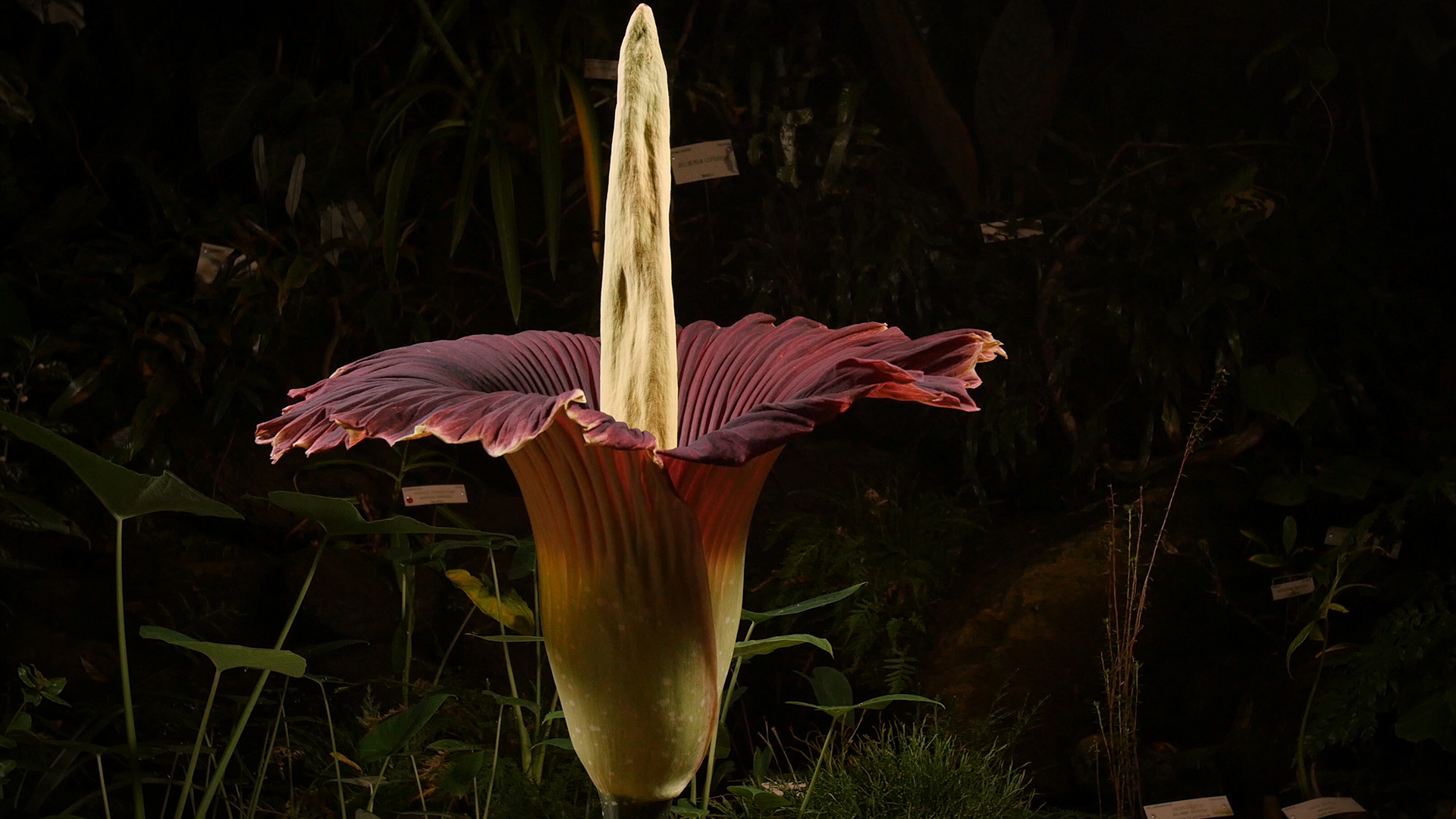“The bloom is a large work in progress because it takes about three years since the last bloom for all the energy to be stored up by this plant,” said Lindzy Bivings, interpretive programs manager at the Gardens of Golden Gate Park, which oversees the Conservatory of Flowers.
 A corpse flower in full bloom. (Josh Cassidy/KQED)
A corpse flower in full bloom. (Josh Cassidy/KQED)
Native to the islands of Sumatra in Indonesia, which are also home to the largest flower in the world, the Rafflesia, only a few thousand corpse flowers remain in the wild and are considered vulnerable.
Corpse flowers produce the largest unbranched inflorescence in the world — a technical term for a cluster of flowers — and are capable of reaching over 10 feet tall.
Corpse flowers emit a uniquely pungent aroma that smells like rotting flesh or decaying meat. A real attraction for the carrion beetle, a pollinator that typically lays their eggs in dead animals.
“That stench is mimicking the smell of a dead animal,” Bivings explained. “It’s called deception. It’s a deceptive pollination strategy, a real scientific term, which is fun.”
Not only does the flower emit a terrible odor, but it also generates heat through a process called thermogenesis. “The spadix can heat up,” Bivings said, referencing the fleshy, tall central part of the plant that holds the tiny flowers. “Part of that heat is thought to volatilize the odor,” she said. “In the wild, that scent can be smelled from up to a mile away.”
The bloom will last only 24 to 48 hours.



















